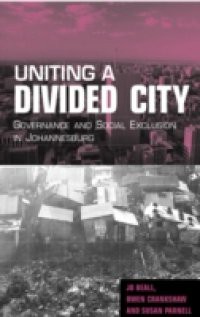For many, Johannesburg resembles the imagined spectre of the urban future. Global anxieties about catastrophic urban explosion, social fracture, environmental degradation, escalating crime and violence, and rampant consumerism alongside grinding poverty, are projected onto this city as a microcosm of things to come. Decision-makers in cities worldwide have attempted to balance harsh fiscal and administrative realities with growing demands for political, economic and social justice. This book investigates pragmatic approaches to urban economic development, service delivery, spatial restructuring, environmental sustainability and institutional reform in Johannesburg. It explores the conditions and processes that are determining the city's transformation into a cosmopolitan metropole and magnet for the continent.

